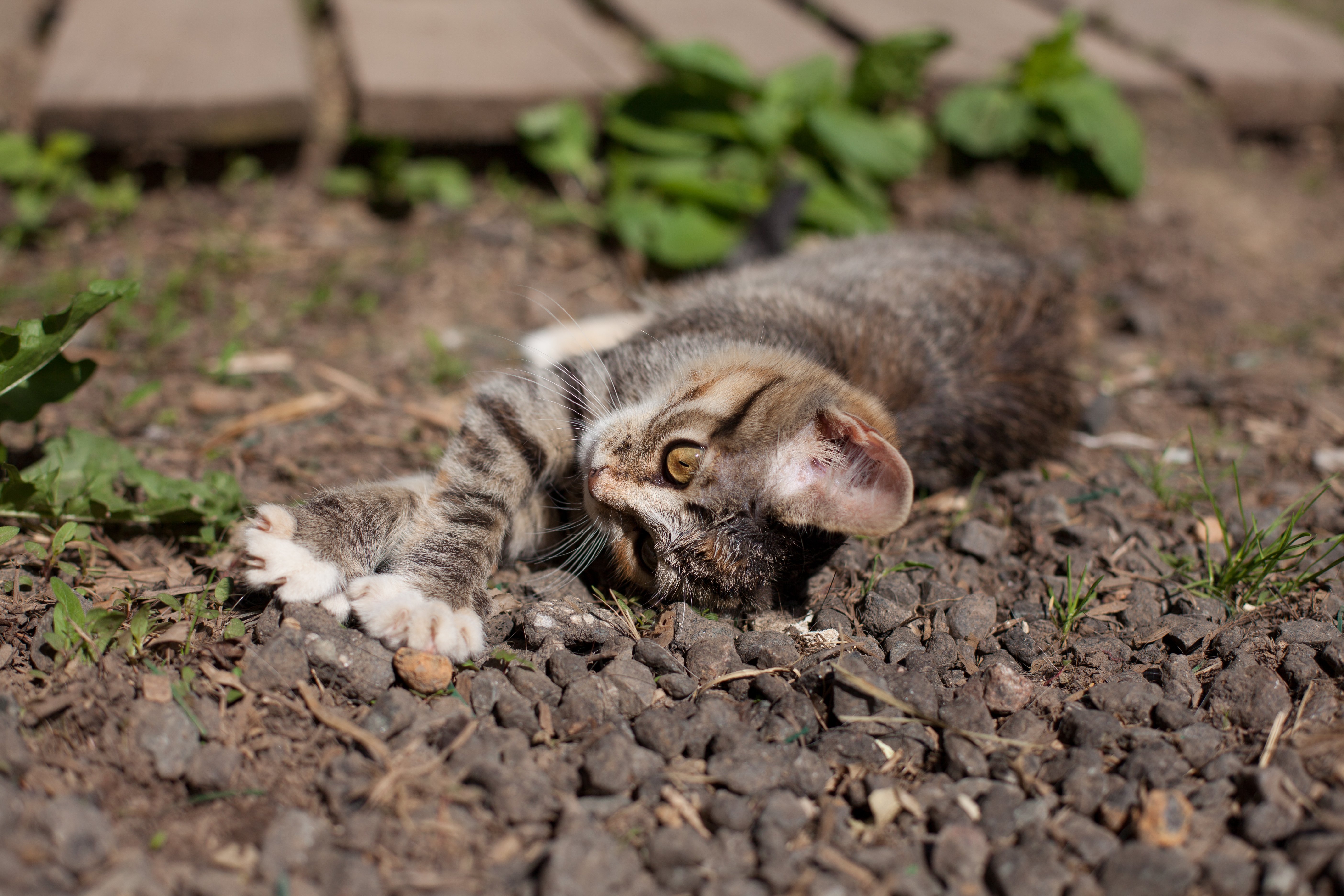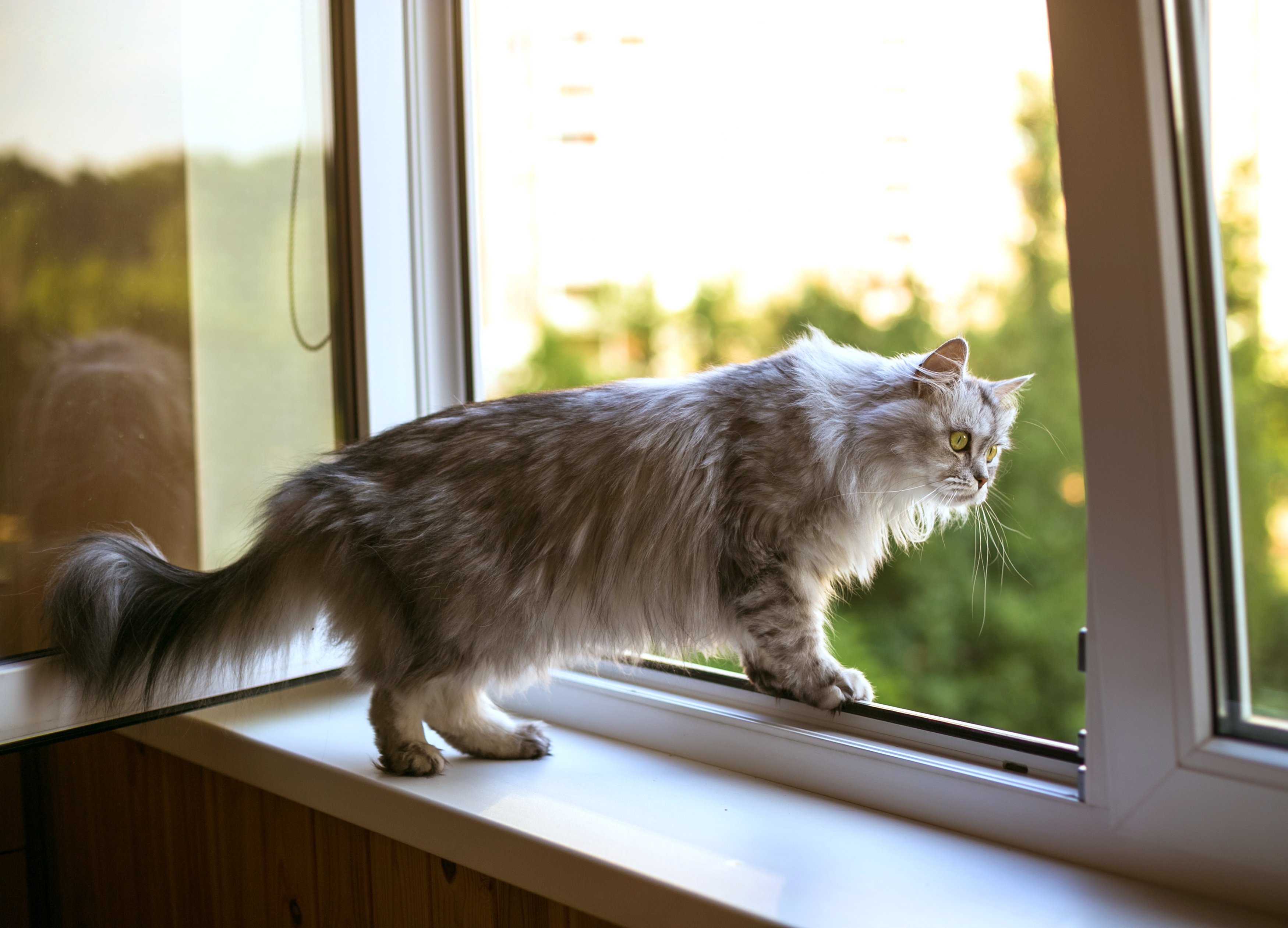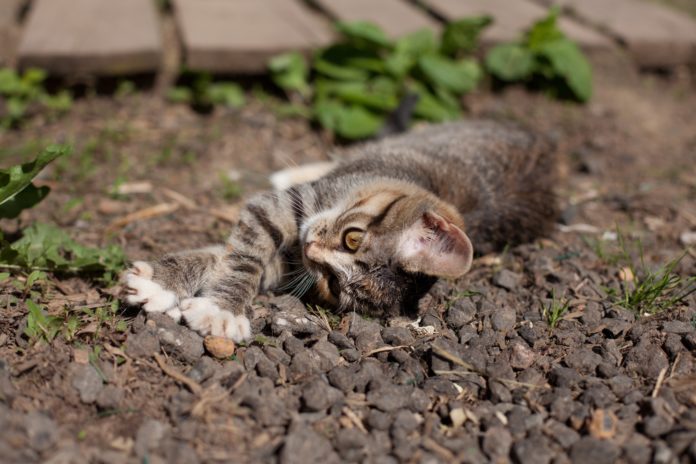coffeemill |

The first fungal infection that comes to mind when we think of cats is ringworm. As you likely know, it doesn’t involve a worm, but rather the fungus Microsporum canis. This is a skin infection that often has round, ring-like lesions. It is not life-threatening, although it does require exquisite hygiene and weeks of topical and/or oral medication to cure.
It is also contagious to humans, in whom the lesions are even more obvious. Still, ringworm infections are generally a minor blip in the life of cats who get infected. Read more about ringworm in our October 2017 issue (available at catwatchnewsletter.com).
Systemic fungal infections are much more serious. A systemic infection is one that spreads throughout the body via the bloodstream. Many organ systems can be affected in a systemic infection.
Some of these fungal infections are not common, but they can be deadly. Systemic fungal infections tend to start out as respiratory infections or in single wounds, but can spread throughout your cat’s body. They require prolonged treatment with drugs that can have serious side effects. In some cases, treatment is not effective and infected cats will succumb to infection.
Cats with chronic disease or compromised immune systems due to viral infections—such as feline leukemia virus (FeLV) and feline immunodeficiency virus (FIV)—or the administration of immune-compromising drugs, such as corticosteroids and chemotherapeutic drugs, are at highest risk.
What to Do
Preventing fungal infections can be difficult, particularly if your cat goes outside. When digging to cover up their feces or working through dirt while hunting, cats can easily become exposed to fungal spores. A cat with a healthy immune system may be able to fight off these exposures without ever becoming ill. Cats with suppressed immune systems are at a higher risk of infection.
Indoor cats may be exposed if you dig up dirt from outside and use it for potting indoor plants. Aerosol exposure (as in spores blowing in through a window) is much less likely.
If you live in an area with a higher risk of fungal infections (see “Description” under each of the fungi listed below for locations) or have traveled with your cat to these areas, be aware of any changes in your cat’s health, and let your veterinarian know if you have traveled to high-risk areas. Early diagnosis, especially if you catch an infection while it is still localized and has not gone systemic, greatly improves your cat’s prognosis.
Protect your cat from immune-compromising diseases by vaccinating for FeLV and by avoiding contact with cats that may be infected with FIV (there is a vaccine available for FIV, but its effectiveness is controversial).
Keep your cat fit and on good nutrition and follow an appropriate parasite-control program. A healthy, vaccinated, parasite-free cat who develops an infection has a better chance of coming through the illness and treatment in good shape. Luckily, systemic fungal infections are not common, but it’s important to be aware of the symptoms and possibility of infection.
lkoimages | AdobeStock

Cryptococcosis
Fungus: Cryptococcus neoformans
Description: This is the most common systemic fungal infection found in cats. This organism is found virtually everywhere in the soil. Some forms of the fungus are normally present on the skin and in the gastrointestinal tract of healthy cats. It is most concentrated in areas where bird (particulary pigeon) droppings collect. These areas of high concentration can remain infectious for years, especially if the droppings collect in a shady and damp area.
Transmission: Most cats become infected by inhaling the spores (dormant reproductive form) of the fungus.
Symptoms: Signs of upper-respiratory illness show up in cats where the infection has taken hold. Sneezing and a bloody or pus-like nasal discharge (which may only be from one nostril) may be noted. In addition, up to 70 percent of all cases develop a polyp in the nostril or a mass under the skin on the bridge of the nose. Masses can show up under or in the skin in other locations as well. Large lumps tend to open, ulcerate, and drain, leaving raw sores. The head and legs are the most likely sites for these lesions.
Cats may also show neurologic signs, such as seizures, circling, and paralysis. You might notice your cat acting depressed and/or different from her normal temperament. Some cats will go blind. Chronically infected cats may have a poor appetite and weight loss.
Diagnosis: Diagnosis is usually achieved by visually identifying the organism in the discharge from one of the nodules or from the nose under a microscope. A culture and/or other blood work may be suggested to verify a diagnosis. A CT scan or MRI may be recommended to evaluate the nasal passages, sinuses, and skull in the case of nasal infections.
Treatment: Oral itraconazole, fluconazole, ketoconazole, or amphotericin B are therapeutic options, and the effectiveness of each of these drugs may vary depending upon the site of infection and stage of disease. Treatment is often required for months to totally clear the infection.
Prognosis: Cats who just have nasal involvement have a fair to good prognosis. If the infection has spread beyond the nasal cavity to involve the brain, prognosis becomes more guarded.
Prevention: Prevention is difficult since the spores are ubiquitous (everywhere). Still, avoiding areas where pigeons congregate is helpful for your cat if she goes outside. Keeping your cat indoors, in good health, and vaccinated against FeLV (particularly if he/she goes outside) are the best preventive measures.
Sporotrichosis
Fungus: Sporothrix schenckii
Description: Sporotrichosis is a relatively uncommon but potentially dangerous fungal infection. Like most fungal infections, the spores are found in dirt and rotting vegetation. Regions along river valleys or in coastal areas have the highest incidence.
Transmission: This infection tends to enter cats via wounds in the skin, including cat bites and scratches. If a cat who has any spores on his mouth or on his nails fights with your cat, the spores may be deposited into the wounds.
Symptoms: Sporotrichosis infections tend to present as abcesses, draining wounds, or skin ulcerations at the site of wounds that caused transmission. Nearby lymph nodes may be affected. When it does spread via the bloodstream, tissues anywhere can become infected, although the lungs and liver are preferred sites of systemic infection.
Diagnosis: Cats with non-healing wounds on the face, tail, or legs (common cat-bite sites) should be checked for sporotrichosis. The discharge from these sores usually has large numbers of the organism present when looked at under the microscope. Confirmation by culture may be helpful.
Treatment: As with any of the fungal infections, long-term treatment (i.e. months) with antifungal drugs such as itraconazole is required. Recommendations for treatment generally suggest continuing medication for a month after the wound appears to be healed.
Prognosis: Prognosis is good if the duration of treatment and compliance with therapy are good. Systemic spread and/or poor therapy compliance and/or too short a duration of therapy are associated with a poor prognosis.
Prevention: Keeping your cat indoors or only outdoors under supervision (so she is not involved in any cat fights) is helpful, especially in immunocompromised cats. This is an illness that can be spread to people, so good hygiene should be practiced when treating any wounds on your cat. Children and anyone with a compromised immune system should not handle these cats or attempt to treat the cat’s wounds.
Histoplasmosis
Fungus: Histoplasma capsulatum
Description: This fungus is found in the soil and may spread bis bird and bat population droppings. While it has been identified in 31 states, most infections tend to be found in river valleys, such as the Ohio, Mississippi, and Missouri river valleys in the Midwestern and southern regions of the United States.
Transmission: Once spores are inhaled or swallowed, infection may settle in the respiratory tract or travel to the gastrointestinal tract, bone marrow, and/or central nervous system.
Symptoms: Clinical signs will depend upon the site of infection. Many cats show high fevers, depression, diarrhea, and weight loss along with coughing and labored breathing. Anemia is common.
Diagnosis: Diagnosis is usually achieved via microscopic examination of samples obtained by either biopsy, fine needle aspiration, or trans-tracheal wash (respiratory tract). Fungal culture and/or other blood tests may also be used to confirm diagnosis.
Treatment: While some cats with normal immune systems may overcome the infection, most cats with histoplasmosis require extensive, prolonged treatment. Both antifungal medications and lots of supportive care in the areas of hydration and nutrition are important for success.
Prognosis: Prognosis depends upon the overall health of the cat and the extent of the infection. If the infection is limited to the lungs, the prognosis is fair. If it has invaded the central nervous system and/or other organ systems, the prognosis is guarded.
Prevention: Keeping your cat indoors and in good general health is your best option.
Blastomycosis
Fungus: Blastomyces dermatitidis
Description: This fungus is commonly found in river valleys, but may also be seen in and around the Great Lakes and along the St. Lawrence Seaway. Any area with moist soil rich with decaying vegetation and an acidic pH is ideal for this fungus to grow in.
Transmission: Inhalation of spores is the most common means.
Symptoms: Respiratory signs (difficulty breathing/coughing), skin lesions (abcesses, draining wounds), and ocular problems may be noticed. Your cat may cough or simply have exercise intolerance and act very lethargic. If the infection spreads to the bones, cats may develop lameness. Spread to the central nervous system can lead to seizures or changes in behavior.
Diagnosis: Microscopic examination of tissue biopsies or fluid samples collected from draining skin areas is required. Enlarged lymph nodes may also be removed for examination.
Treatment: Long-term therapy using antifungal drugs (itraconazole, fluconazole, amphotericin B) and supportive care are required.
Prognosis: Guarded, especially with lung and/or central nervous system involvement.
Prevention: Keep your cat indoors. Immediately contact your veterinarian if you see any signs of this disease.




